7 Days to Die Xbox One review: Creative survival that misses the mark
During a time where Minecraft exponentially expanded, and survival-RPGs such as DayZ took the spotlight online, 7 Days to Die was a natural culmination of 2013's two biggest hits.
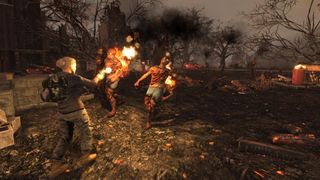
7 Days to Die is a voxel-based survival game at its core, with an alterable world built from textured cubes. Unlike many games that follow this cubic structure, the game has been textured with smoother, natural terrain to hide this backbone. This serves as a platform for an extensive role-playing game, which brings together a comprehensive crafting and construction system with survival mechanics.
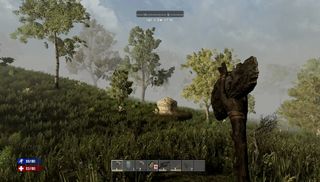
7 Days to Die has lost its unique position in the market
The appeal to fans of both titles didn't go unnoticed, after successfully funding its Kickstarter campaign and providing an Alpha version to those who backed it. A few months later, come the end of the year, the game found its stride on Steam's Early Access program.
Unfortunately, this was nearly three years ago. The gaming landscape has changed since mid-2013 and as a result, 7 Days to Die has lost its relevance. Some survival games have released on the Xbox One since, which provide much more refined experiences. As a result of this 7 Days to Die has lost its unique position in the market and while the game still has some redeeming aspects, it fails to part itself from the competition.

Gameplay
7 Days to Die's gameplay revolves around a somewhat natural progression as you discover new resources in the game's world. While there are linear aspects to how your equipment and abilities improve, they seamlessly integrate into the world as a whole.
Upon starting a new world in 7 Days to Die, players are set out to scavenge for new materials and find a shelter for the night. With no protection from the threats of the surrounding world, the game's focus is largely on progression without confronting enemy zombies. These are some of most enjoyable parts of the game, which requires the player to stay conservative in this vulnerable state.
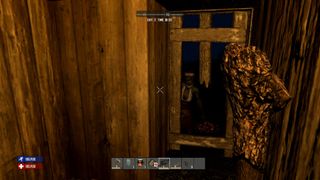
The game's day-night cycle becomes an essential component in planning, as zombies become more powerful once the sun sets. Zombies are tougher and gain the ability to run during the night and when paired with the reduced visibility, can become an overwhelming threat.
After gathering the resources and tools to stand independently, the focus soon shifts towards adventure-based gameplay. When gaining access to powerful weapons, the game's tempo increases simultaneously, which reduces the need for pre-planning and strategy. That said, a careful approach is best in all situations, with zombie hordes able to overthrow the strongest of survivors.
Get the Windows Central Newsletter
All the latest news, reviews, and guides for Windows and Xbox diehards.

The world lacks the polish to be expected, with bland animations that feel rather static
Following your first few minutes in the wastelands of 7 Days to Die, the game exposes new players to its daunting resource management, skills, and crafting systems. While this appears complex at first, the game's basic crafting mechanics are explained in a short tutorial. Beyond obtaining materials, crafting is rather simple, with no additional steps beyond a click of a few buttons. Despite their overwhelming introduction, the game's crafting systems become less relevant as a player progresses.
The skills system adds further depth to player progression, with set abilities to be accumulated over the course of the game. Spending skill points earned throughout the game let you acquire these new skills, to increase the player's potential in certain areas. These skill points aren't easy to come across, which places more weight on how they're allocated.
While the concepts behind 7 Days to Die's mechanics accomplish what they set out to achieve, the game's flawed implementation holds back its potential.
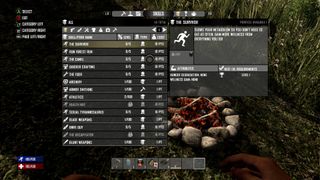
One of the more important qualities of any role-playing title is player immersion, which 7 Days to Die fails to withhold due to its numerous inconsistencies. The world lacks the polish to be expected, with bland animations that feel rather static. This is most noticeable with zombie animations, which feel slow and unresponsive upon receiving damage. When combined with loose movement and animations, combat begins to show the flaws in 7 Days to Die's execution.
Performance
7 Days to Die's console version feels noticeably inferior to its PC counterpart
Evidence of 7 Days to Die's port from the PC to Xbox One isn't discrete, with a lack of optimization for the console. Between hanging frames and poor interface adjustments for controllers, 7 Days to Die's console version feels noticeably inferior to its PC counterpart.
Menu layouts heavily revolve around conventional keyboard and mouse users, including tabbed menus and an on-screen cursor. Between the menu's unresponsive transitions and slow cursor, navigating player inventories can be one of the game's most tedious tasks. This becomes a bigger issue when playing from a distance, with the small faux-cursor prevailing as a major inconvenience. The game's menus are also packed with unnecessary walls of text, which adds to the initial frustration.
Rather than reworking the game's user interface from the ground up, a faster radial menu has been introduced to streamline menu selection. This is a quicker way to access certain tabs of the player menu but only acts as a shortcut to a more complex layout. In many titles, these grievances wouldn't be a prevalent issue, but due to the game's reliance on crafting mechanics, the ultimate experience suffers as a whole.
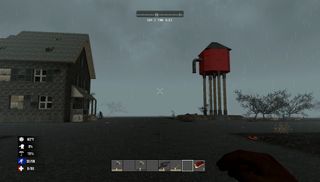
Conclusion
7 Days to Die successfully brings together two massively popular genres into a single cohesive experience. Due to many inconsistencies and an overall lack of polish for consoles, the game fails to immerse players in the world it offers.
Pros:
- A varied range of in-game tools and objects
- Compelling premise
Cons:
- Careless optimization on consoles
- Static feel to the game's world
- Lost relevance since its development began
With a user interface barely optimized for controllers and a release three years after its initial alpha, it feels that consoles are a mere afterthought of the original vision.
This review was conducted on Xbox One using a copy provided by the developer.
Matt Brown was formerly a Windows Central's Senior Editor, Xbox & PC, at Future. Following over seven years of professional consumer technology and gaming coverage, he’s focused on the world of Microsoft's gaming efforts. You can follow him on Twitter @mattjbrown.
